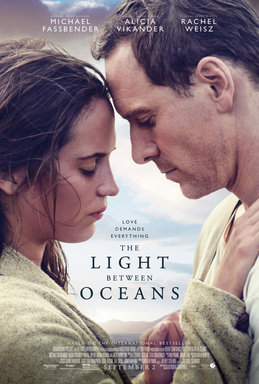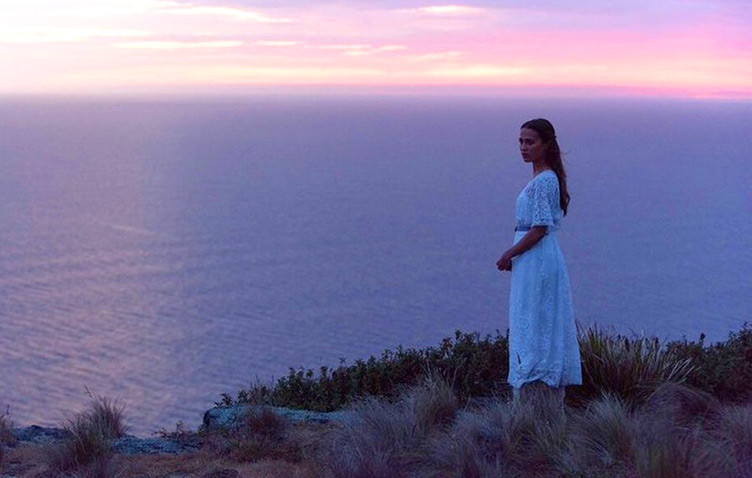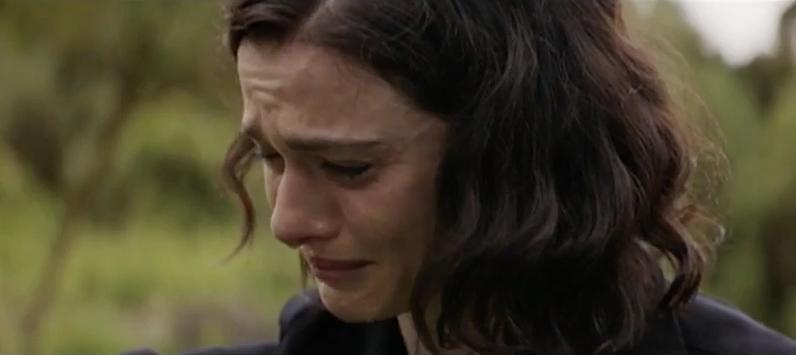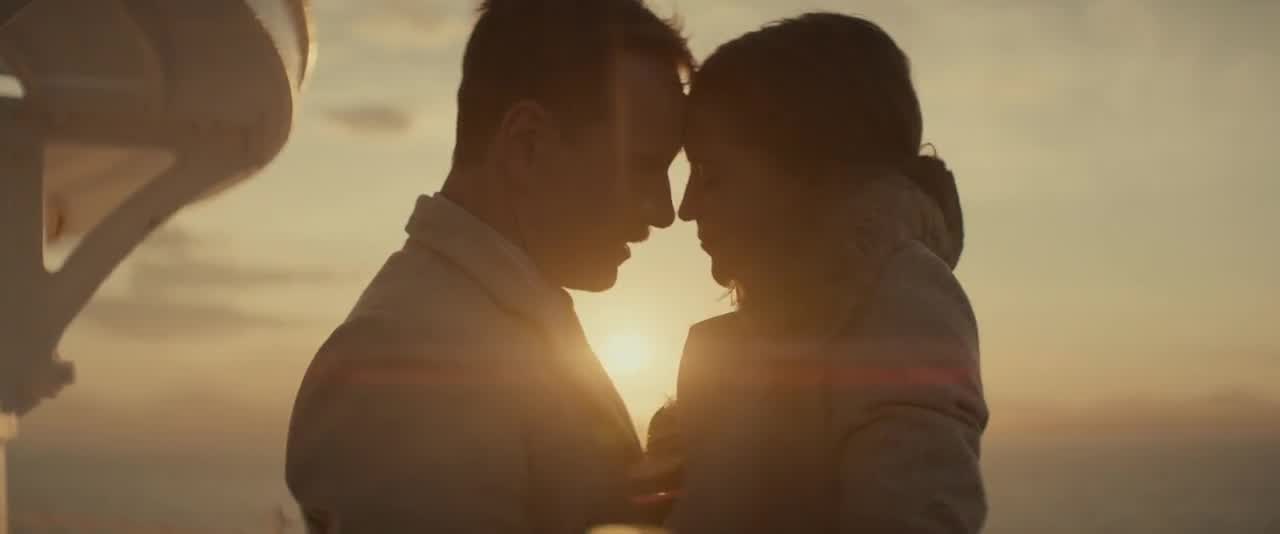THE LIGHT BETWEEN OCEANS Review

Director: Derek Cianfrance
Genre: Drama
Year: 2016
Oscar-bait often stings to watch, especially when it certainly won’t get snagged. They carry the weight of films primed for proper recognition (especially in the overly dramatic field) and perhaps even contain a unique style or perspective that subverts a little harder than the Academy desires. Think AIN’T THEM BODIES SAINTS and James Gray’s THE IMMIGRANT. Derek Cianfrance is the king of this particular ring, in the sense that he’s always close to rising above; in many circles, he often does. His films are bold in tackling distinctly human, distinctly tragic themes via Cassavettes-esque looseness and direction, paired with a specifically melodramatic heartache that transcends soap opera status and instead is exhausting, if not bold. His third feature effort, THE LIGHT BETWEEN OCEANS, is decidedly his first foray into formalist territory, capturing a post World War I period full of strife and grief, infecting the wills of people simply searching for love where it can’t fester sans dramatic caveat. It’s perfect for his developing oeuvre, and translates into a mostly solid effort, but also incidentally is the least likely of his films yet to deserve to break out. This comes with the new notion that even a weaker Cianfrance film is at the very least a solid outing with some lovely qualifiers.

There’s romance, they said… Everyone loves each other, they said…
RAISING ARIZONA is mutated through a Joe Wright-ian kaleidoscope. A devastated veteran of WWI, Tom (Michael Fassbender), longs for personal peace and finds it by taking control of a lighthouse on an island adjacent to a small Australian town. It’s a lonesome gig and place, until he meets Isabel (Alicia Vikander), who pumps life and love back into his veins like a soulful resurrection. In Cianfrance’s tight but ballet-like fashion, they fall in love, and Isabel joins Tom on the island, which has a reported cabin fever effect on its past residents. They try to have children, but Isabel’s insides were a rocky place where Tom’s seed could find no purchase… She was inconsolable. After two devastating miscarriages, all hope seems lost, until out of nowhere, a small boat washes ashore, housing a baby and her dead father. Tom quickly jumps to proper precaution, ready to call in a report. But Isabel, in a tornado of desperation and chaotically misplaced love, demands they take care of the baby. Thus sets off a portrait of a new family, using love as a disguise for guilt, regret, and eventual, fateful comeuppance; THE LIGHT BETWEEN OCEANS is a Cianfrance film, after all, baby.
More known for method story and character discovery through performance deconstruction with his pal Ryan Gosling, Cianfrance only manages to put on half the clinic he’d normally prefer to in this film. The plot of THE LIGHT BETWEEN OCEANS is itself a twisty devastation marathon, which on paper, Cianfrance should love. His style matches nicely with the thematic content, trading in predominant use of handheld camera for Robert Elswit and Paul Thomas Anderson-like emphasis on close ups and weaving wide shots (captured by cinematographer Adam Arkapaw), and deliciously composed crossfading (orchestrated by Jim Helton and Ron Patane). Even Cianfrance’s integration of Alexandre Desplat’s moving score plays with diegetic sourcing, driving us in and out of psyches and environments. It’s pretty, capturing nature and human nature intertwined enough to match the existentially painful core at the center of the film, as well as Cianfrance’s general idealism. It’s as wandering (yet trapped on the rails of time) as any of his films have been, and cinematically, it tracks.

The central plot is her trying to get down from this cliff safely
THE LIGHT BETWEEN OCEANS is adapted from an M.L. Stedman novel. Translation to the screen calls to mind the poetic fare of Terrence Malick’s romances, and even more so, the heart-wrenching likes of last year’s BROOKLYN and CAROL. As far as romances and families being driven apart by nature at its dirtiest, this film plays out like as bloody a boxing match as you could imagine. Individual moralities are tested for the sake of love for others, each development not pleasing anyone in the slightest due to deeper emotional implications; Cianfrance loves to play with direct cause and effect. Consequences in his films are very real, and everyone seemingly has to pay the dealer at some point, making each push toward an end that much heavier.
On paper, he certainly knows how to make the punches land. Yet THE LIGHT BETWEEN OCEANS finds him trading off intentions or tagging out his gut instinct for the sake of simply “getting there.” The film has its fair share of naturalistic magic in performance and montage, though often feels stiffened and choked up when it comes to transitioning from A to B. This especially happens around the second half of the film, the plot losing a sense of the humanity driving itself, and becomes more heartbreaking for the sake of twisting the knife. The performances suddenly tighten up and have less room to breathe life into the film, despite the performers giving it their respective all. The stylistic difference is suddenly incongruent, making the affair feel much plainer than it needs to be. THE LIGHT BETWEEN OCEANS’ formalist mix-up catches Cianfrance scrambling between sights, instead of elegantly blending his directorial notions together, as if no one were watching, like in his bolder, previous outings.

Her directions: BE. LIKE. THE GOS.
Despite throwing them off tempo occasionally, Cianfrance doesn’t disappoint in his casting in the slightest. Audaciously going where he’s never gone before (without Ryan Gosling in tow), he manages to find that trademark sense of endearing melancholy in Michael Fassbender, Alicia Vikander, Rachel Weisz, and the perfectly adorable Florence Clery, who has Jude Swanberg challenged in the Best Toddler Actor race. Vikander and Weisz specifically have respectfully complicated emotional dances to barrel through as separate women on the fringes of motherhood and happiness. Their portrayals of depressed lovers lost along their life paths makes up the key thematic edge of the film, and through thick and thin of pacing and pitch shifting, they deliver even in pure presence. Michael Fassbender seems to be in full Malick mode after a certain point, really just soaking in his sadness. His screen presence makes it work, when otherwise it would feel like bad filler. His occasional sudden bursts of passion feel like oil strike explosions as a result of his heft. Ultimately, in what feels like signature Cianfrance, the child performer (Florence Clery) really steals the show, managing to fit period-wise and to exist and emote as if there weren’t cameras around. It’s natural, sweet, and heart-breaking; the peak of what these kinds of films are utterly capable of.

Oh… The light is the sun! Wow, what a film
While it can’t formally reach the potential heights indicated by its skeleton, THE LIGHT BETWEEN OCEANS serves as a functional and flat-out emotionally stirring venture. Alicia Vikander and Rachel Weisz in particular earn this film two reasons to be seen, with their passion holding it up as essential tent poles. Derek Cianfrance stumbles, but never face plants here. Many would say this is an element that plagues his previous film THE PLACE BEYOND THE PINES, which is eons more ambitious and daring than this. It certainly is stacked to the gills, and perhaps is imperfect for it, but it confidently struts out onto the highwire it sets up and does its act without flinching. This time out, he doesn’t strike as hard, leaving the swelling of psychologically plaguing emotions and dust-in-the-wind ponderings in the bullet point phase instead of full execution. But he’s reached these lengths for a reason; Cianfrance once again gives very talented actors a stage to perform a misty-eyed play of human folly. Even if the performers are the ones getting the deserved credit here, THE LIGHT BETWEEN OCEANS still serves as a good stepping stone for a continuously growing director with grand possibility in his heart. If you listen close enough, you can hear it beating; coughing, but with spirit.
Verdict: Recommend



